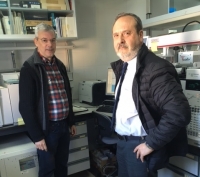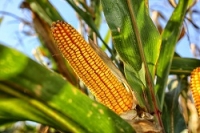A scientific study characterizes two new Galician olive varieties for the first time
Escrito por UCC+iThe research, done in collaboration with the University of Cordoba, recognizes the potential and high quality of these olive oils
Olive oil is a key element and one of the main sources of fat in the Mediterranean diet. Olive oil is remarkable for its nutrients and Spain has the honor of being the number one producer of this “liquid gold.” Though most Spanish olive oil production takes place in Andalusia, over the last few years other regions within Spain have begun to produce high quality olive oil, using their own varieties native to those regions.
The social media are undermining young people’s self-esteem
Escrito por UCC+iA study by the University of Córdoba shows how use of the social media by young people adversely affects their self-perception of body image, and links this phenomenon to eating disorders
The social media are part of our everyday lives, enabling new methods of communication, improved access to information and even the development of new working strategies, in a range of fields including education. Yet the use – or abuse – of social media has also given rise to a number of problems, particularly among the most exposed sectors of the population.
How do African air masses influence olive-pollen allergy levels?
Escrito por UCC+iA study by researchers at the University of Córdoba shows how the arrival of African air masses at high altitudes affects olive-pollen transport in Andalusia
Olive pollen is amongst the most widespread airborne pollens in southern Europe; its frequency, coupled with an intense flowering regime, gives rise to a high incidence of allergies.Research into the factors governing airborne pollen counts and their behaviour is increasingly playing a key role in improving the quality of life of those sensitive to olive -pollen allergens.
Researchers analyse the effect of C02pressure on the aroma of sparkling wines
Escrito por UCC+iAn UCO research team is studying the effect of carbon dioxide pressure on yeast metabolism during the second fermentation of sparkling wines
During alcoholic fermentation, yeasts turn sugar into ethanol and CO2gas. The gas forms the small bubbles which distinguish sparkling wines from “still” wines. High-quality sparkling wines are made using the traditional method, which requires a second alcoholic fermentation of a base wine – to which sugar and yeasts are added – in sealed bottles, followed by an interval of ageing in contact with yeast lees. This method was first described by the Benedictine monk Dom Pierre Pèrignon (1638-1715). When sugar is added to a wine and a second fermentation is carried out in an open container, the C02 produced is released into the atmosphere; however, when the second fermentation is carried out in a sealed container or bottle, the CO2overpressure released affects yeast metabolism.
Extraction of cellulose nanocrystals from corn residue
Escrito por UCC+iA researcher at the University of Córdoba, working with American and French scientists, has succeeded in obtaining this resistant material from one of the world's most abundant agricultural residues
Nanocrystals, discovered only a few years ago, may provide the scientific community with the new building material of the future. These tiny cellulose crystals are the most abundant organic biomolecule in the earth's biomass. Despite their light weight and flexibility,they have been proved to offer greater resistance than steel. They are therefore valuable in a wide range of applications aimed at strengthening and hardening building materials, as well as in mechanics and biomedicine.
An experiment in mice palliates kidney disease caused by diabetes
Escrito porResearch group succeeds in removing a protein from kidney cells involved in blood filtration
Diabetes has become a major health problem worldwide; some estimates suggest that in twenty years' time there will be around 600 million diabetics. The disease is caused by impaired insulin secretion, which in turn hinders cell glucose uptake; as a result, sugar levels in the bloodstream remain excessively high. One of the most common complications of diabetes is diabetic nephropathy, a disease which affects the ability of the kidneys to eliminate waste matter.







